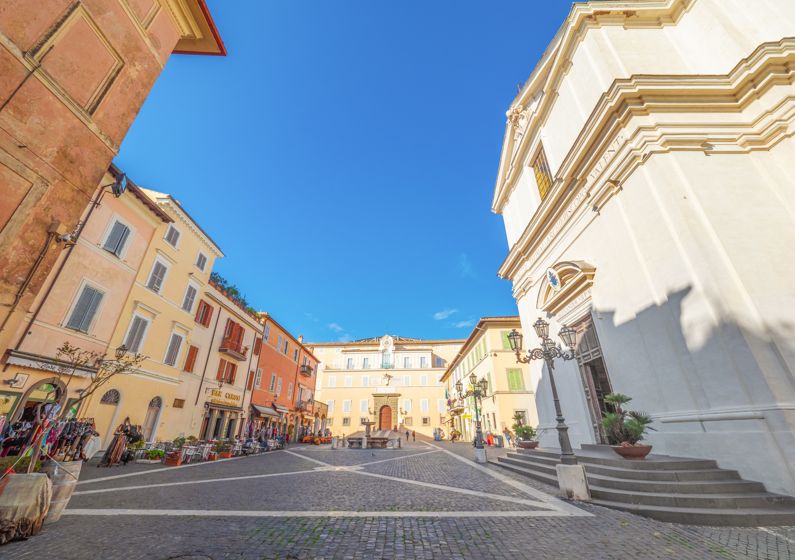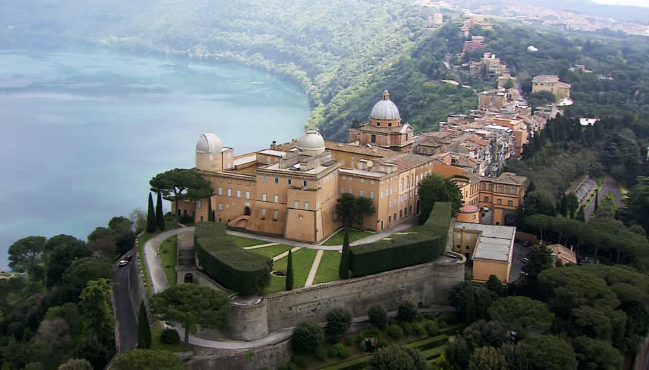


Summer Residence of the Holy Father.
Castel Gandolfo is an Italian town in the metropolitan city of Roma Capitale, in the Castelli Romani area. The inhabited center is part of the circuit of the most beautiful villages in Italy.

It is known above all for the presence of the summer residence of the popes, which is surrounded by many other summer residences, villas and cottages built starting from the seventeenth century.

Its territory includes almost the entire coastal arc of Lake Albano with a view of the volcanic cone of Monte Cavo, which houses, among other things, the CONI Olympic rowing stadium.

There are also various places of archaeological interest (including the emissary of Lake Albano and the remains of the Alban villa of Domitian), naturalistic (being the area included in the perimeter of the Castelli Romani regional park) and artistic (such as the pontifical collegiate church of San Tommaso da Villanova built by Gian Lorenzo Bernini).

CASTEL GANDOLFO: FROM IMPERIAL RESIDENCE TO PONTIFICAL VILLA
The visitor who enters the Pontifical Villas of Castel Gandolfo for the first time certainly does not imagine finding himself in front of the conspicuous remains of one of the most famous villas of antiquity, the Albanum Domitiani, the grandiose country residence of the emperor Domitian (81 -96 A.D.), which developed for about 14 square kilometers from the Via Appia to include Lake Albano.

The Pontifical Villas extend over the remains of the central part of the residence, which included, according to the hypothesis formulated by distinguished scholars, also the Arx Albana, located at the end of the hill of Castel Gandolfo, where the Papal Palace is now located, and which once housed the center of the ancient Albalonga.
The Villa of Domitian was located on the western slope of the hill, in a dominant position on the Tyrrhenian sea. The slope had been cut into three large shelves sloping down to the sea. The first, higher up, included the residences of the imperial servants, the various services and the cisterns, fed by the Palazzolo springs - located on the opposite shore of the lake - by means of three aqueducts, still partially existing, which supply the papal Villa and the built-up area of ??Castel Gandolfo.

On the median shelf, delimited upstream by a large substructure wall, interrupted by four nymphaeums with an alternately rectangular and semicircular plan, stood the imperial palace and the theater. The lower shelf included the cryptoporticus, the great covered promenade of the emperor, originally about three hundred meters long. The shelf then split into several successive terraces, mostly intended for gardens, one of which included the racecourse.

Video of the inauguration of the Via dei Laghi, tourist route of the Castelli Romani - Castelgandolfo, Rome 1936
Village of Castel Gandolfo
Address: Piazza della Libertà , 3, 00073
Phone: 06 9359181
Site:
https://www.vaticanstate.va/it/monumenti/altri-monumenti/castel-gandolfo.htmlLocation inserted by
CHO.earth